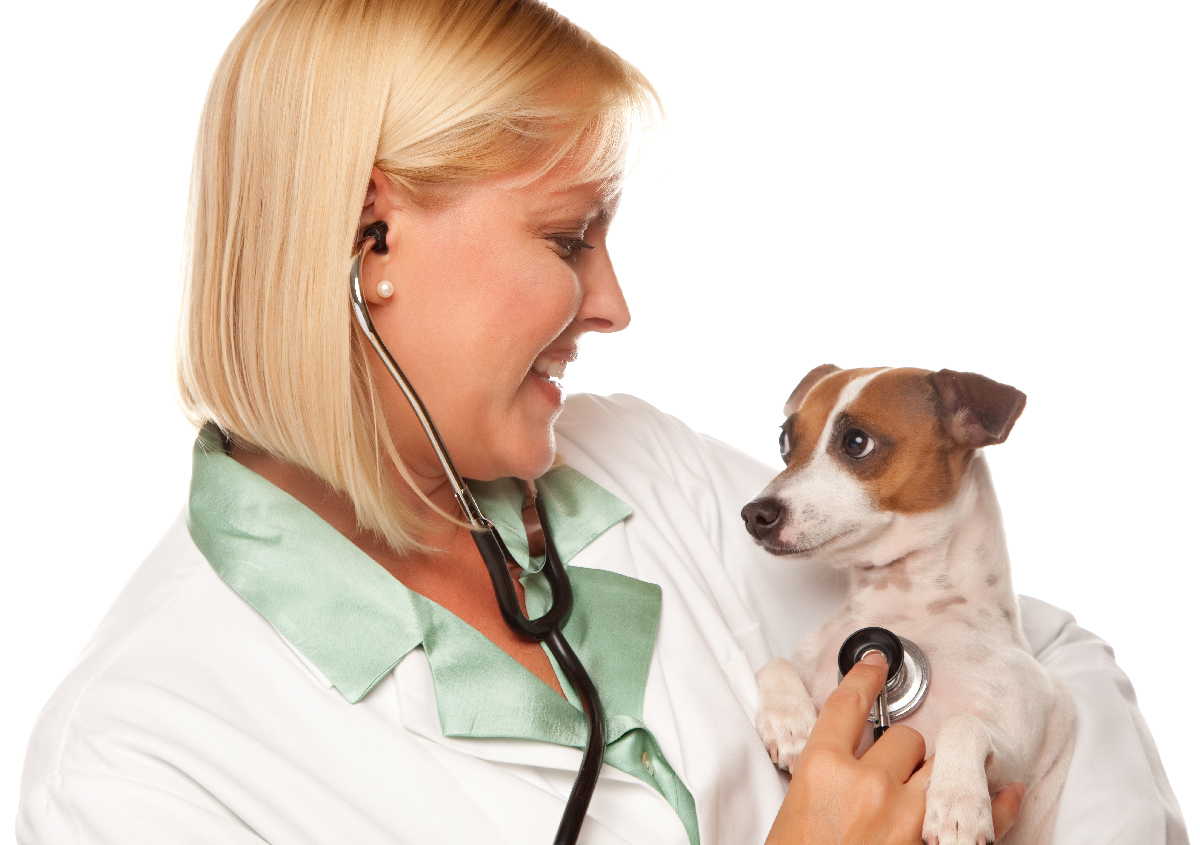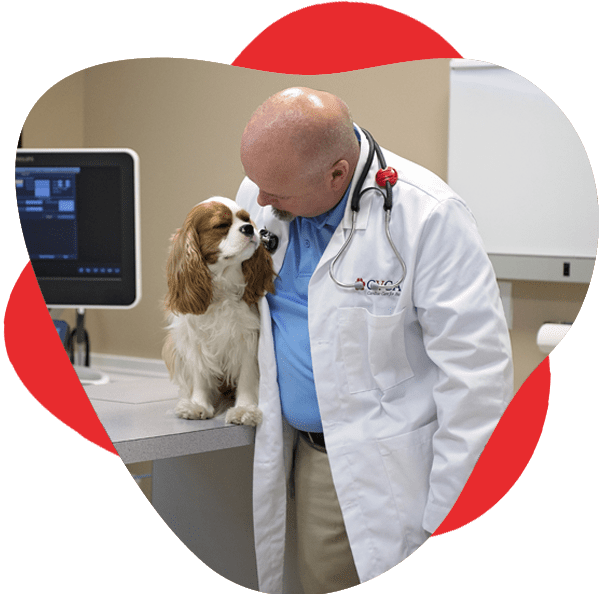Conditions Commonly Diagnosed Through CT Scans For Dogs}
What You Need to Know About Veterinary Services: A Review of Diagnostic Tools and Procedures
Vet solutions play a crucial duty in preserving the health and wellness of family pets. Regular check-ups can reveal hidden health concerns early. Different analysis devices and treatments, such as blood tests and imaging methods, offer important insights right into an animal's well-being. Comprehending these approaches is key for pet dog proprietors. What particular analysis procedures are most commonly made use of, and just how can they influence an animal's therapy plan?
Value of Normal Veterinary Exams
While numerous family pet owners might undervalue the relevance of routine veterinary check-ups, these consultations are vital for maintaining a pet's general health and wellness. Routine visits to the vet enable very early detection of possible wellness problems prior to they intensify right into serious issues. Regular examinations frequently consist of inoculations, which are essential for stopping transmittable diseases that could severely affect a family pet's wellness. Furthermore, these consultations provide a chance for vets to assess the animal's weight, oral wellness, and total condition, making sure that the pet is flourishing. Throughout these visits, animal owners can additionally receive important guidance on diet plan, exercise, and preventative treatment customized to their specific family pet's requirements.
Usual Analysis Treatments in Veterinary Medicine
In veterinary medicine, precise medical diagnosis is vital for reliable therapy. Usual analysis treatments consist of blood screening methods, advanced imaging modern technologies, and urinalysis, each playing a significant role in identifying health problems. Recognizing these approaches enhances the capability to give ideal take care of animal people.
Blood Examining Strategies
Blood testing strategies act as essential analysis tools in vet medication, allowing veterinarians to examine the health and wellness of pets accurately. These techniques involve gathering blood examples to examine numerous parts, such as white and red blood cells, platelets, and biochemical markers. Typical tests consist of complete blood matters (CBC), which examine total wellness and spot infections, and biochemical panels, which assess organ function and metabolic standing. Furthermore, serological tests can recognize certain conditions through antibody detection. Blood testing is minimally intrusive and gives crucial info that helps in detecting conditions, keeping track of health and wellness condition, and assessing actions to therapies. Overall, these methods play an important duty in ensuring suitable care for pet dogs and animals alike.
Imaging Technologies Utilized
Diagnostic imaging innovations are essential tools in vet medication, complementing blood screening strategies by providing aesthetic insights right into a pet's internal structures. Typical imaging methods include X-rays, which are helpful for assessing bone fractures and discovering foreign things, and ultrasound, which enables real-time visualization of soft cells and body organs. Magnetic vibration imaging (MRI) offers detailed pictures of intricate anatomical areas, particularly in neurological evaluations. Calculated tomography (CT) supplies cross-sectional photos, boosting analysis accuracy for various conditions. Each of these innovations aids veterinarians in detecting illnesses, planning therapies, and keeping track of healing. By integrating imaging innovations, veterinary specialists can much better analyze an animal's health and make informed choices regarding their treatment.
Urinalysis and Diagnostics
Urinalysis acts as a critical diagnostic tool in vet medication, offering important understandings into an animal's overall wellness and helping in the detection of numerous problems. This non-invasive procedure assesses pee examples to analyze kidney feature, hydration status, and metabolic disorders. Common parts checked out include certain gravity, pH levels, sugar, proteins, and the visibility of blood or bacteria. Uncommon searchings for can indicate issues such as urinary system tract infections, diabetic issues mellitus, or kidney illness. To boost diagnostic precision, urinalysis is frequently executed combined with various other tests, such as blood job and imaging researches. Early discovery through urinalysis can cause timely interventions, boosting the diagnosis for many vet patients. Therefore, it is an essential aspect of extensive vet treatment.
Understanding Blood Tests and Lab Evaluation
Comprehending blood tests and research laboratory analysis is essential in vet medicine as it assists in diagnosing various health and wellness problems in pets. Different kinds of blood examinations give crucial information regarding an animal's interior state, while interpreting lab results needs cautious factor to consider of countless aspects. This area will certainly discover the kinds of blood tests available and the relevance of their outcomes.
Kinds of Blood Examinations
Blood examinations play an important duty in vet medication, supplying essential insights into an animal's health and wellness standing. Numerous sorts of blood tests are used, each offering various functions. Total blood counts (CBC) analyze overall health and spot conditions such as anemia or infection. Biochemical accounts review organ function by gauging electrolytes and enzymes, using understandings right into metabolic health and wellness. Serological tests recognize particular antibodies or microorganisms, aiding in the medical diagnosis of infections or autoimmune conditions. Blood keying warranties safe transfusions, while coagulation examinations evaluate the blood's capability to clot, important for procedures. These tests jointly improve diagnosis, therapy planning, and tracking of an animal's wellness, showing the significance of detailed lab evaluation in veterinary care.

Interpreting Lab Results
A comprehensive analysis of laboratory results is important for precise medical diagnosis and therapy in veterinary medicine. Interpreting laboratory results calls for an understanding of typical recommendation ranges and the significance of deviations. Blood examinations can disclose numerous health indicators, such as body organ function, electrolyte balance, and the existence of infections. Vets should take into consideration the entire medical picture, including the animal's background, health examination findings, and any type of signs presented. Variants in results may occur from elements such as age, type, and underlying health and wellness problems. As a result, lab outcomes should not be seen alone however rather as part of a comprehensive diagnostic approach. Accurate interpretation permits for tailored treatment strategies and far better outcomes for vet people.
Imaging Techniques: X-rays, Ultrasounds, and Beyond
Imaging methods are vital tools in veterinary medication, providing important insights right into the health and wellness and health of animals. Amongst one of the most generally used methods are X-rays and ultrasounds. X-rays are invaluable for picturing bone frameworks, helping veterinarians recognize cracks, tumors, or foreign objects. This technique is fast and non-invasive, making it perfect for urgent situations.Ultrasounds, on the other hand, use audio waves to develop photos of soft cells and body organs. This strategy is particularly valuable for analyzing the heart, abdominal area, and reproductive organs, enabling veterinarians to analyze problems like additional reading liquid accumulation or organ abnormalities.Beyond X-rays and ultrasounds, advanced imaging techniques such as computed tomography (CT) and magnetic vibration imaging (MRI) are significantly made use of in vet technique. These methods offer comprehensive cross-sectional images, enhancing the accuracy of medical diagnoses and treatment plans. CT Scans For Dogs. On the whole, imaging techniques play an important role in guaranteeing effective veterinary treatment
The Function of Biopsies in Diagnosing Pet Dog Health Issues
Precision in detecting health and wellness issues in family pets often depends upon the usage of biopsies, which supply definitive info concerning cells irregularities. A biopsy involves the removal of a tiny sample of tissue for evaluation under a microscopic lense, enabling veterinarians to recognize numerous conditions, consisting of infections, tumors, and inflammatory conditions. This analysis tool is crucial for identifying between deadly and benign growths, assisting therapy decisions, and reviewing the intensity of a condition.Biopsies can be executed making use of numerous techniques, such as needle aspiration, incisional biopsies, or excisional biopsies, depending on the area and kind of cells entailed. The option of approach may impact recuperation time and the amount of cells collected. Eventually, the info gleaned from a biopsy can cause targeted treatments, improving results for family pets dealing with major health and wellness challenges. Veterinarians highlight the relevance of this procedure in accomplishing exact medical diagnoses and this website effective treatment strategies.
Advanced Diagnostic Devices: Endoscopy and CT Scans

Advanced analysis devices, such as endoscopy and CT scans, play an important function in modern veterinary medicine, offering non-invasive methods to visualize inner frameworks and detect different conditions in pets. Endoscopy includes the use of an adaptable tube outfitted with a video camera, allowing vets to check out the stomach tract and breathing system directly. This technique can reveal problems such as lumps, foreign bodies, or inflammation, making it possible for targeted therapy plans.CT scans, on the various other hand, utilize innovative imaging innovation to create detailed cross-sectional pictures of the body (Ultrasound For Dogs). This technique is particularly helpful for evaluating complex structures like the mind, spinal column, and joints. By providing high-resolution pictures, CT scans help veterinarians in recognizing issues that might not appear through typical radiography. Together, these innovative devices improve analysis accuracy, enhance therapy end results, and ultimately add to better general pet dog health and wellness management

Translating Test Outcomes: What Family Pet Owners Ought To Know
Recognizing examination results can be a tough job for family pet owners, especially after innovative procedures like endoscopy and CT scans have been performed. Analyzing these results calls for a grasp of medical terminology and a clear understanding of what the searchings for indicate concerning the pet's wellness. Veterinarians frequently give descriptions, however the intricacy of the results can still bring about confusion.Pet proprietors should actively engage in conversations with their vets, asking questions to make clear any unpredictabilities. It is important to recognize abnormal versus normal outcomes and the effects for the animal's treatment plan. Furthermore, identifying that some results may call for more screening or tracking can aid proprietors stay notified regarding their pet dog's health trip. Eventually, a collaborative technique between animal proprietors and veterinary experts cultivates better health and wellness results and boosts the general treatment experience for pet dogs.
Regularly Asked Inquiries
Just how Do I Choose the Right Veterinary Clinic for My Pet?
Selecting the appropriate vet facility entails researching neighborhood alternatives, reviewing credentials, visiting facilities, and assessing team communications (Cancer Veterinary Near Me). Prioritizing suggestions from trusted sources can help assure the most effective care and environment for a pet dog's health demands
What Should I Do if My Animal Declines to visit the Vet?
When an animal rejects to visit the veterinarian, it's suggested to stay calm, usage deals with or playthings to tempt them, and take into consideration arranging a home check out if anxiousness continues. Patience and favorable reinforcement are crucial.
Are There Telehealth Options for Veterinary Services?
Telehealth choices for vet services are progressively readily available, permitting family pet owners to speak with vets from another location. These services enable discussions regarding health and wellness worries, suggestions on minor disorders, and follow-ups without needing to go to a clinic.
Just how Frequently Should My Pet Have Oral Examinations?
The frequency of dental check-ups for family pets commonly depends upon their age and type. Generally, veterinarians advise annual dental analyses, although some animals may need even more frequent brows through to preserve suitable oral health.

What Are the Expenses Connected With Veterinary Diagnostics?
The prices connected with veterinary diagnostics can differ widely, commonly varying from basic tests like blood job to innovative imaging methods. i thought about this Factors influencing costs include the facility's location, equipment made use of, and specific tests required for each and every animal. Vet services play a vital role in keeping the health and wellness of animals. While several animal proprietors might undervalue the value of normal vet examinations, these appointments are important for keeping an animal's total wellness. In addition, these appointments supply a chance for veterinarians to examine the pet's weight, dental wellness, and general condition, making certain that the family pet is prospering. Precision in diagnosing health and wellness issues in family pets usually hinges on the usage of biopsies, which offer clear-cut info regarding cells abnormalities. Additionally, acknowledging that some outcomes may need more testing or monitoring can aid proprietors stay notified regarding their pet dog's health and wellness journey.